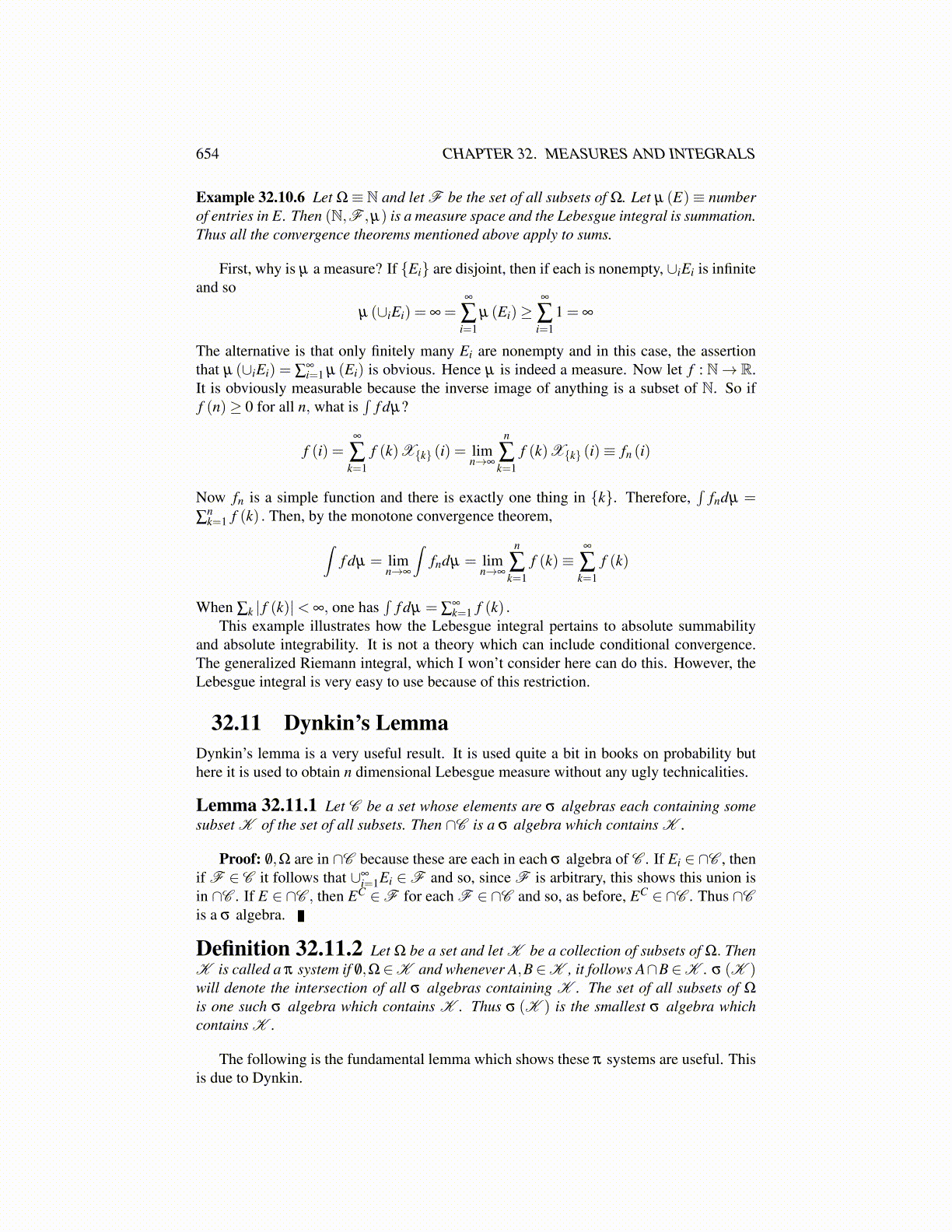
654 CHAPTER 32. MEASURES AND INTEGRALS
= limN→∞
N
∑k=1
∫· · ·∫
XF k∩Rn (x1, · · · ,xp)dµ j1 · · ·dµ jp
= limN→∞
∫· · ·∫ N
∑k=1
XF k∩Rn (x1, · · · ,xp)dµ j1 · · ·dµ jp
=∫
· · ·∫
limN→∞
N
∑k=1
XF k∩Rn (x1, · · · ,xp)dµ j1 · · ·dµ jp
=∫
· · ·∫
XF∩Rn (x1, · · · ,xp)dµ j1 · · ·dµ jp
Thus G is closed with respect to countable disjoint unions. So suppose F ∈ G . ThenXFC∩Rn = XRn −XF∩Rn . Everything works for both terms on the right and in addition,∫I XRndµI is finite and independent of I . Therefore, everything works as it should for the
function on the left using similar arguments to the above. You simply verify that all makessense for each integral at a time and apply monotone convergence theorem as needed.Therefore, G is indeed closed with respect to complements. It follows that G ⊇ σ (K ) byDynkin’s lemma, Lemma 32.11.3. Now define for F ∈ σ (K ) ,
µ⃗ (F )≡ limn→∞
∫IXF∩Rn (x1, · · · ,xp)dµI
By definition of G this definition of µ⃗ does not depend on I . If you have{F k}∞
k=1 is asequence of disjoint sets in G , then if F is their union,
µ⃗ (F )≡ limn→∞
∫I
∞
∑k=1
XF k∩Rn (x1, · · · ,xp)dµI
and one can apply the monotone convergence theorem one integral at a time and obtain thatthis is
limn→∞
∞
∑k=1
∫IXF k∩Rn (x1, · · · ,xp)dµI
Now applying the monotone convergence theorem again, this time for the Lebesgue integralgiven by a sum with counting measure, the above is
∞
∑k=1
limn→∞
∫IXF k∩Rn (x1, · · · ,xp)dµI ≡
∞
∑k=1
µ⃗
(F k)
which shows that µ⃗ is indeed a measure. Also from the construction, it follows that thismeasure does not depend on the particular permutation of the iterated integrals used tocompute it.
The claim about the integral 32.14 follows right away from the monotone convergencetheorem applied in the right side one iterated integral at a time and approximation withsimple functions as in Theorem 32.2.8. The result holds for each of an increasing sequencesimple functions from linearity of integrals and the definition of µ⃗ . Then you apply themonotone convergence theorem to obtain the claim of the theorem.
32.13 Exercises1. Show carefully that if S is a set whose elements are σ algebras which are subsets of
P (Ω) , then ∩S is also a σ algebra. Now let G ⊆ P (Ω) satisfy property P if G